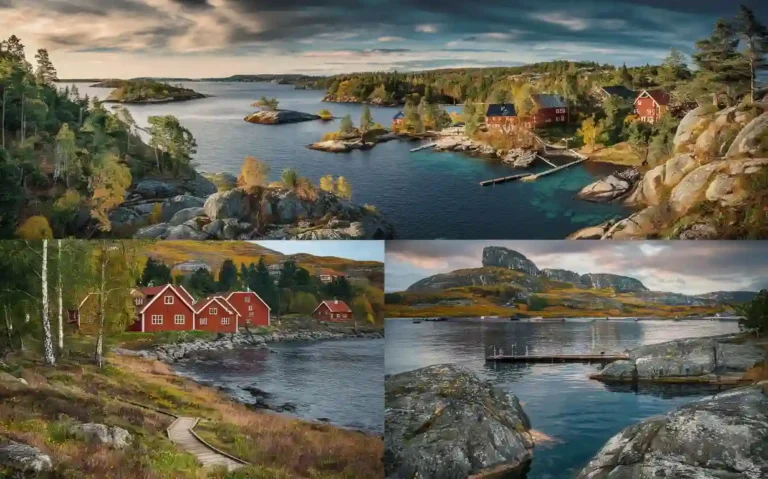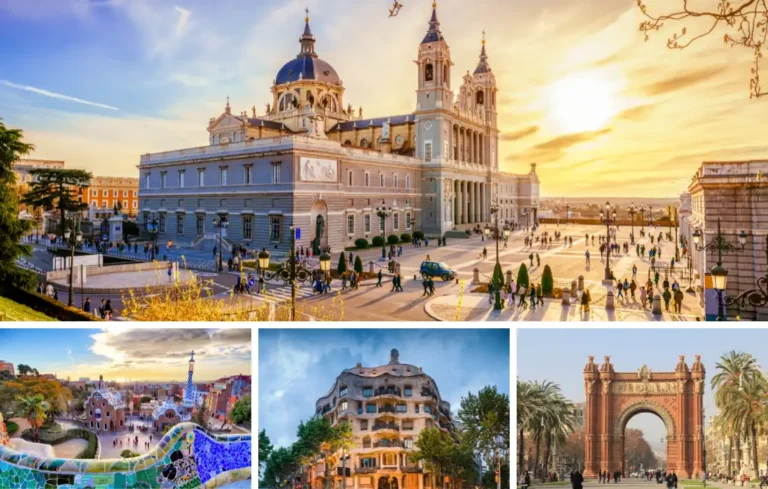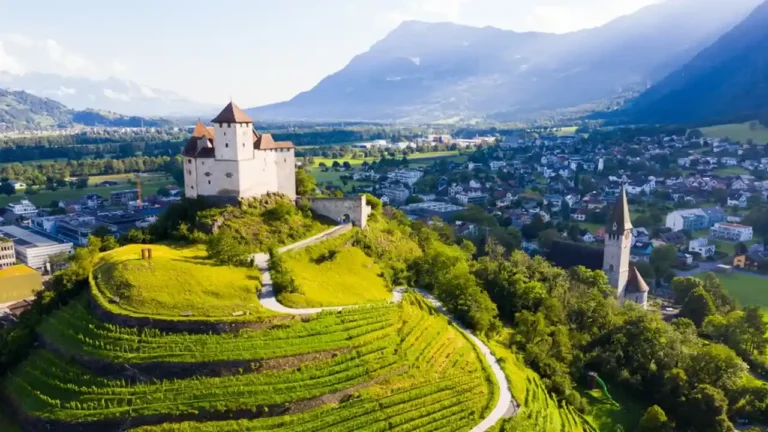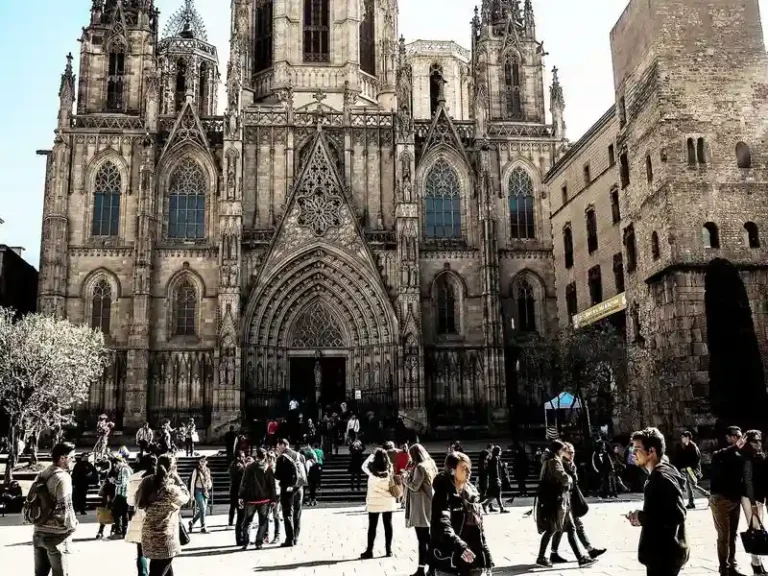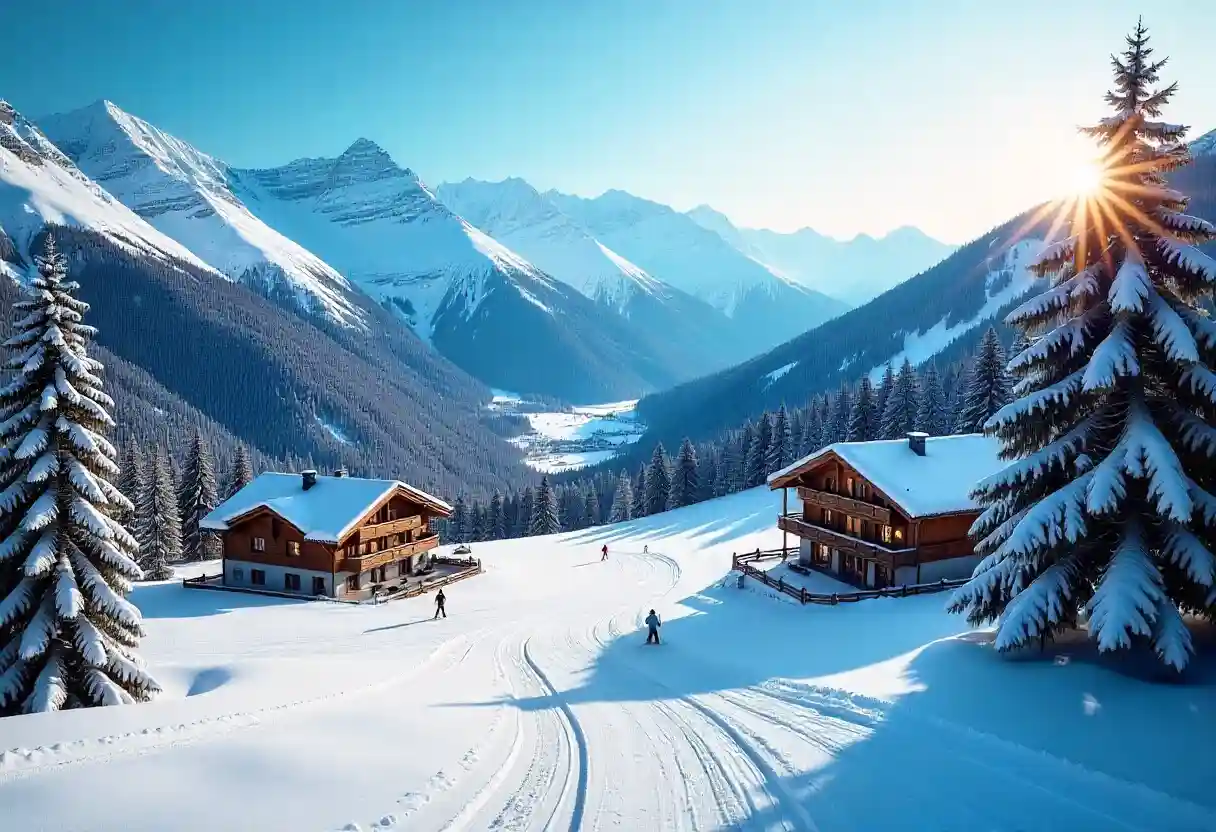
When I think about the best European ski resorts, my mind immediately drifts to that magical morning in Val d’Isère when I watched the sun paint Mont Blanc’s peaks in shades of rose gold while sipping coffee at 2,300 meters.
After two decades of chasing powder across four continents and documenting winter adventures for major travel publications, I can confidently say that Europe offers the world’s most diverse and culturally rich skiing experiences.
From my first tentative turns on the gentle slopes of La Plagne to conquering the legendary Vallée Blanche in Chamonix, I’ve witnessed how the best European ski resorts seamlessly blend world-class skiing with centuries of Alpine tradition.
Each resort tells its own story—whether it’s the car-free cobbled streets of Zermatt beneath the iconic Matterhorn, or the après-ski revelry echoing through St. Anton’s mountain bars until dawn.
This winter, I’m sharing my insider perspective on the 15 best European ski resorts that have consistently delivered unforgettable experiences throughout my travels. These tourist destinations represent the pinnacle of European skiing, from budget-friendly gems in Eastern Europe to exclusive retreats where Michelin-starred restaurants meet pristine powder.
Whether you’re seeking family-friendly blue runs or heart-pounding off-piste terrain, Europe’s winter wonderland has something extraordinary waiting for you.
Why Europe is a Dream for Ski Enthusiasts
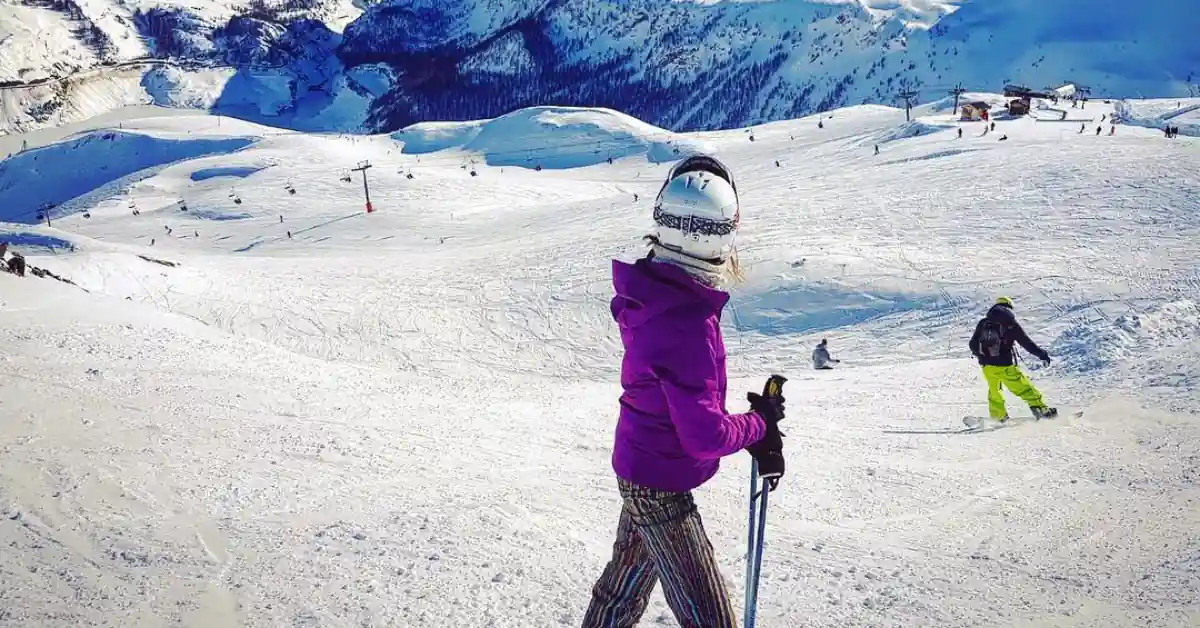
During my extensive travels across European ski destinations, I’ve discovered that nowhere else on earth combines skiing excellence with such profound cultural depth.
The European Alps stretch across eight countries, creating an interconnected playground where you can literally ski from France into Switzerland and back again before lunch. I’ve done this countless times on the Portes du Soleil circuit, marveling at how seamlessly borders dissolve on the mountain.
The diversity is staggering. In a single week, I’ve experienced the dramatic limestone spires of Italy’s Dolomites, the glacier-topped peaks of Austria’s Ötztal Alps, and the volcanic landscapes of Spain’s Sierra Nevada.
Each mountain range brings its own character—from the technical challenges of Chamonix’s legendary off-piste terrain to the perfectly groomed cruising runs of Courchevel’s Les Trois Vallées.
What sets European ski resorts apart is their après-ski culture. This isn’t just about drinking; it’s about celebrating the mountain lifestyle.
I’ve shared fondue with local families in century-old mountain huts, danced on tables at Austria’s infamous Folie Douce, and enjoyed intimate wine tastings in ski-in/ski-out chalets. The Europeans understand that skiing is as much about community and cuisine as it is about conquering slopes.
Europe’s extensive public transit systems make resort-hopping surprisingly accessible. I’ve traveled from Zurich to Zermatt by train in under four hours, watching the landscape transform from urban sophistication to Alpine grandeur through panoramic windows.
This infrastructure, combined with lift systems that connect entire valleys, creates skiing experiences simply impossible to replicate elsewhere.
15 Best European Ski Resorts for 2025
1. Chamonix, France – Legendary Slopes, Mont Blanc Backdrop
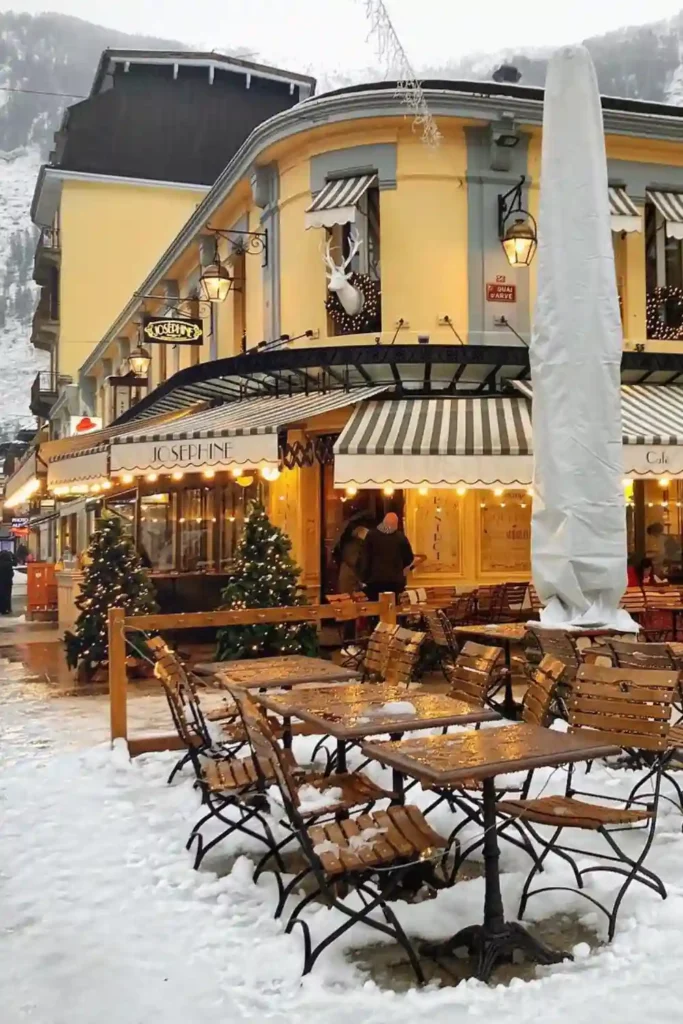
Standing at the base of the Aiguille du Midi cable car, preparing for my first descent of the legendary Vallée Blanche, I understood why Chamonix holds such mythical status among serious skiers. This isn’t just another ski resort—it’s the birthplace of extreme skiing, where the sport’s most iconic moments have unfolded against the dramatic backdrop of Mont Blanc, Western Europe’s highest peak.
Chamonix’s terrain demands respect and rewards experience. The off-piste opportunities are endless, from the accessible powder fields of Les Grands Montets to the heart-stopping couloirs that have challenged generations of mountaineers. During my multiple visits, I’ve learned that the resort’s true magic lies in its authenticity—this is a real mountain town where locals have been guiding adventurous skiers for over a century.
Best for: Advanced and expert skiers seeking legendary off-piste terrain and authentic Alpine culture.
Insider tip: Book the first Aiguille du Midi cable car up (8 AM) to beat crowds to the Vallée Blanche. The snow quality is dramatically better in the morning shadows, and you’ll have the iconic descent largely to yourself.
2. Zermatt, Switzerland – Car-Free Village, Matterhorn Views
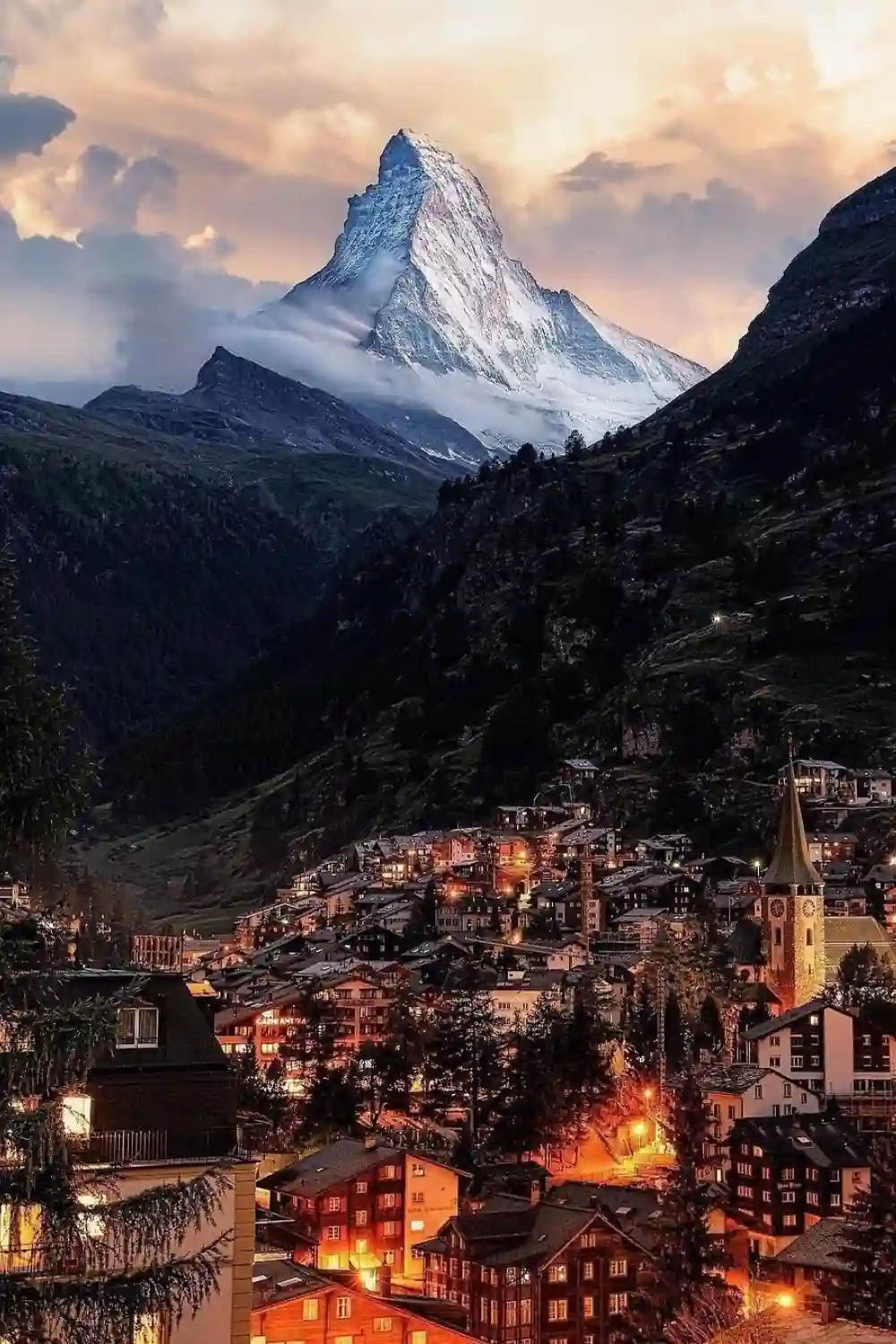
Nothing quite prepares you for that first glimpse of the Matterhorn’s perfect pyramid rising above Zermatt’s car-free cobbled streets. I’ve returned to this Swiss gem eight times over the past decade, and that iconic silhouette still takes my breath away every single visit. The train journey from Täsch—where you leave your car behind—builds anticipation as traditional chalets give way to increasingly dramatic Alpine scenery.
Zermatt offers year-round skiing thanks to its high-altitude glacier terrain, making it one of Europe’s most snow-reliable destinations. The Klein Matterhorn lift system takes you to 3,883 meters, where I’ve skied in shorts during July while tourists below sweltered in Mediterranean heat. The interconnected lift network with Italy’s Cervinia creates vast skiing possibilities, though the Swiss side consistently offers superior snow quality and grooming.
The resort’s commitment to sustainability impressed me from day one. Electric taxis, horse-drawn carriages, and pedestrian-only streets create an atmosphere that feels both luxurious and authentically Alpine. After countless evenings exploring Zermatt’s restaurant scene, from mountain hüttes serving traditional raclette to Michelin-starred establishments, I can confirm this resort consistently delivers world-class experiences.
Best for: Intermediate to advanced skiers wanting reliable snow, iconic scenery, and car-free Alpine charm.
Insider tip: Take the Gornergrat railway for sunset—the Matterhorn turns golden pink, and you can ski down the mountain by headlamp on designated runs.
3. St. Anton am Arlberg, Austria – Après-Ski Capital, Expert Runs
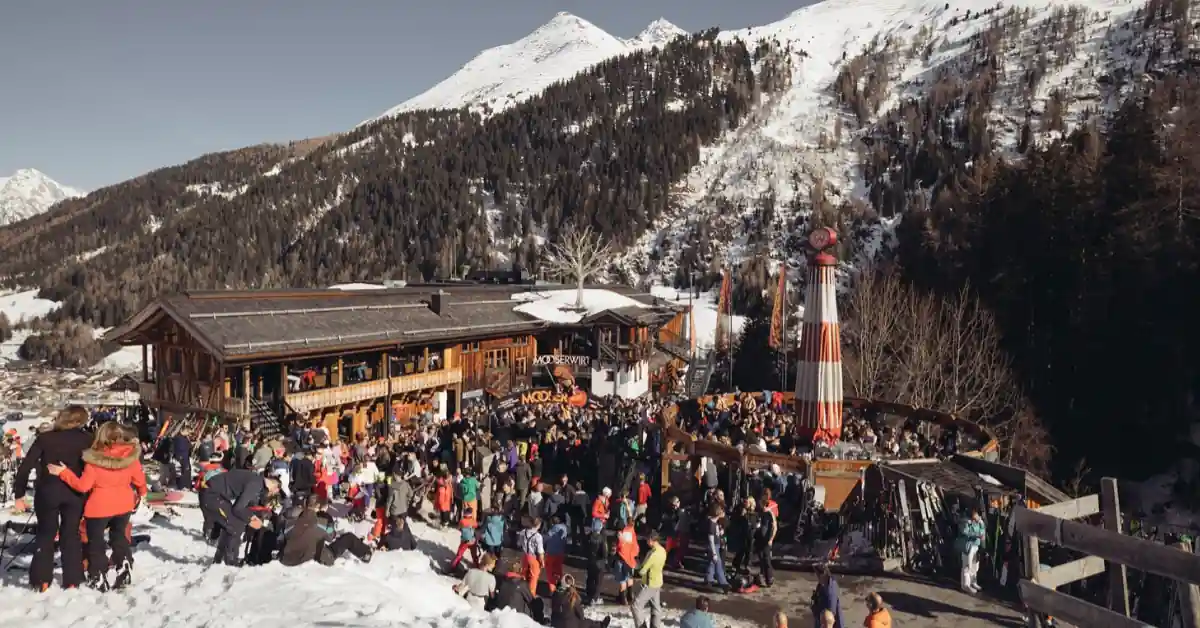
My first après-ski experience in St. Anton’s legendary MooserWirt changed everything I thought I knew about mountain nightlife.
By 3 PM, this mountainside bar was packed with skiers dancing on tables, Austrian folk music mixing with modern beats, and an energy that continued well into the Tyrolean night. This is where Austria’s après-ski culture reaches its most exuberant expression.
But St. Anton is far more than just a party destination—it’s a serious skier’s mountain. The Hahnenkamm downhill, which I’ve spectated multiple times, represents one of skiing’s most fearsome challenges.
The resort’s expert terrain is legendary, with steep off-piste runs that have humbled even seasoned professionals. During powder days, locals call in sick to work—a tradition I’ve embraced during extended stays here.
The Ski Circus connecting St. Anton to neighboring valleys creates over 300 kilometers of interconnected terrain. I’ve spent entire days exploring these connections, discovering hidden powder stashes and traditional mountain restaurants that haven’t changed in decades.
The resort’s ski school, where modern techniques were pioneered, maintains exceptionally high standards that I’ve witnessed transform nervous intermediates into confident advanced skiers.
Best for: Confident intermediate to expert skiers who want challenging terrain and legendary après-ski culture.
Insider tip: Skip the crowded valley bars and head to Sonnenkopf’s mountain restaurants around 2 PM—better atmosphere, local crowd, and you can ski straight down for evening festivities.
4. Val d’Isère, France – Luxury, Extensive Slopes, Espace Killy
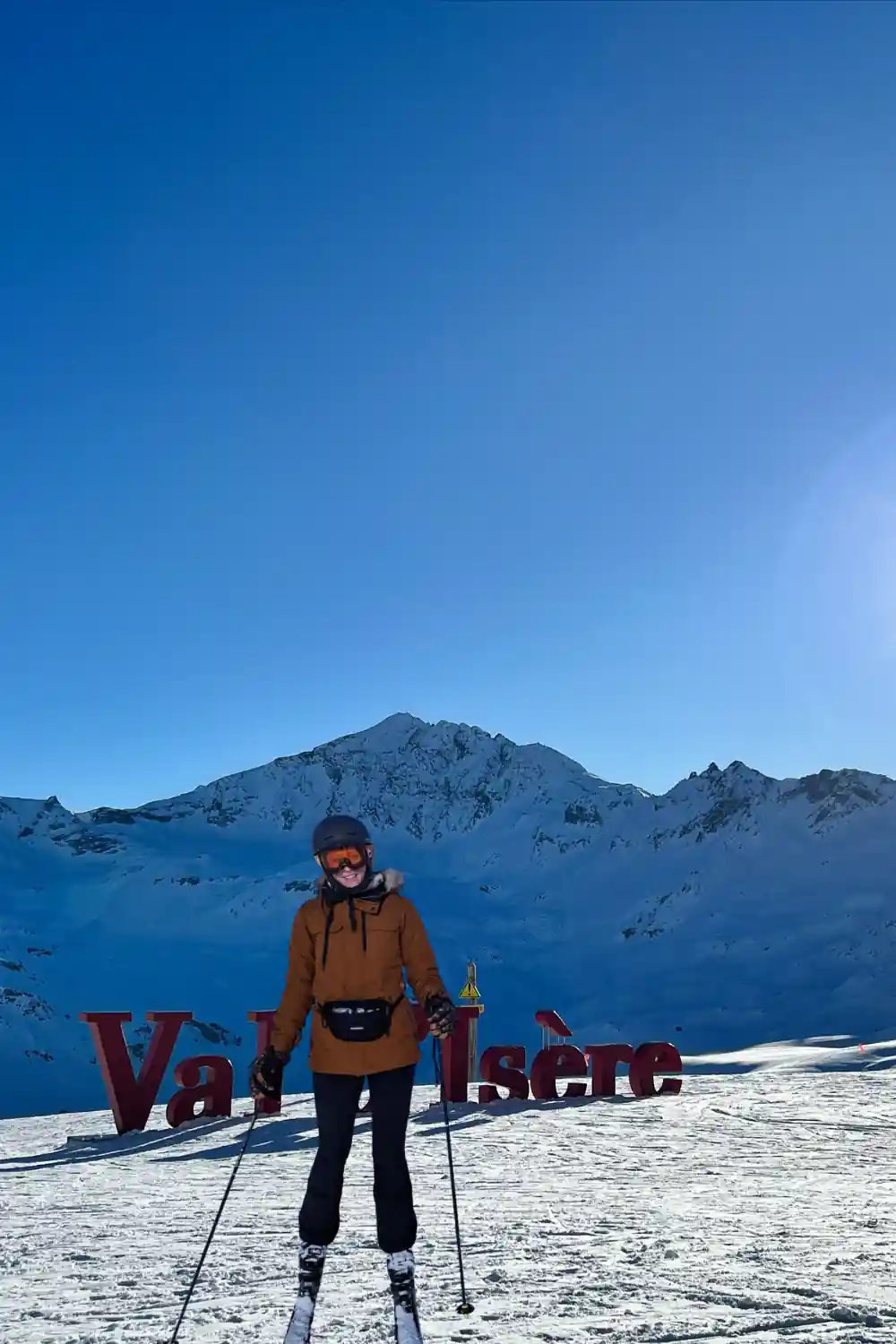
Val d’Isère epitomizes French Alpine sophistication, and I’ve returned repeatedly to experience its unique blend of high-altitude skiing and refined mountain culture.
Connected to Tignes via the Espace Killy domain, this resort offers 300 kilometers of groomed terrain that consistently ranks among Europe’s best maintained slopes.
My relationship with Val d’Isère began during a December storm cycle that delivered over two meters of fresh snow in five days. Watching expert skiers carve fresh lines down the Face de Bellevarde while I gained confidence on perfectly groomed blue runs, I understood why this resort attracts such diverse skiing abilities.
The high-altitude terrain ensures excellent snow quality well into April—I’ve experienced perfect powder conditions here in late March when lower resorts were already showing spring conditions.
The resort’s dining scene reflects its upscale positioning without losing Alpine authenticity. From my regular table at La Folie Douce’s legendary mountain restaurant to intimate dinners at family-run establishments in the old village, Val d’Isère consistently delivers memorable culinary experiences.
The architecture maintains traditional Savoyard character despite the resort’s modern amenities, creating an atmosphere that feels both luxurious and authentically French.
Best for: Strong intermediate to advanced skiers seeking extensive terrain, reliable snow, and refined French Alpine culture.
Insider tip: Book accommodation in Val Village rather than the main resort center—you’ll pay 30% less, still have easy lift access, and experience more authentic local atmosphere.
5. Courchevel, France – Part of Les 3 Vallées, Glitz and Glamour
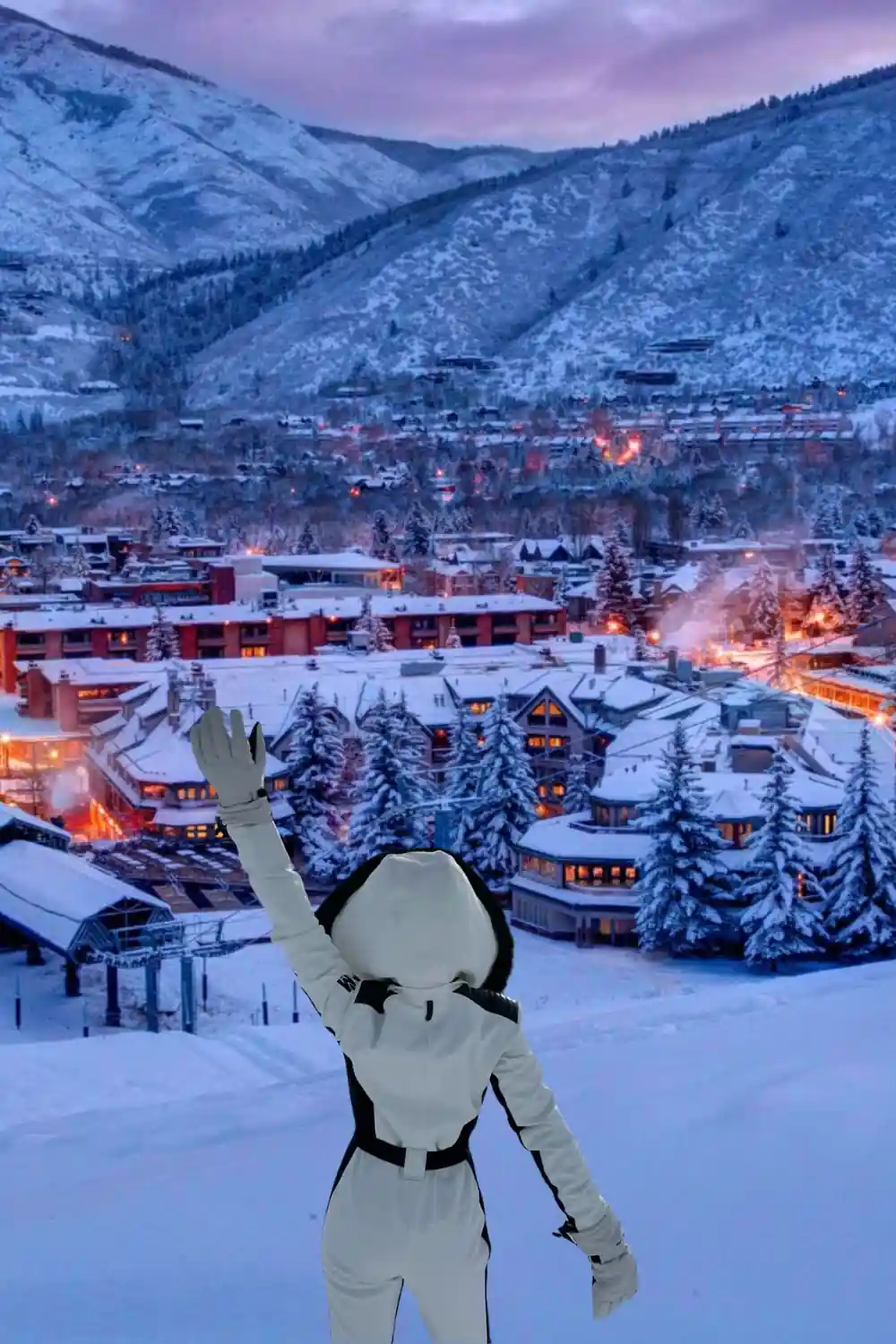
Courchevel 1850 represents European skiing at its most glamorous, where I’ve watched helicopters deliver champagne to mountain restaurants while skiers in designer gear carve perfect turns down immaculately groomed pistes.
As part of the massive Les Trois Vallées domain—the world’s largest interconnected ski area—this resort offers 600 kilometers of terrain that would take weeks to fully explore.
During my stays here, I’ve witnessed Courchevel’s unique ability to blend serious skiing with luxury lifestyle. The resort attracts European royalty and international celebrities, yet the mountain remains accessible to skilled intermediates seeking perfectly maintained slopes.
I’ve spent entire days skiing the interconnected valleys, taking lunch in Méribel before returning to Courchevel’s exclusive boutiques and Michelin-starred restaurants by evening.
The resort’s commitment to grooming excellence is unmatched—even after heavy snowfall, the piste maintenance team works through the night ensuring perfect corduroy conditions by morning.
The ski lifts and cable cars represent cutting-edge technology, with heated seats and weather protection that makes mountain travel comfortable even during storms. Val Claret’s high-altitude terrain provides reliable snow conditions well into the spring skiing season.
Best for: Intermediate to advanced skiers wanting luxury amenities, extensive terrain, and Europe’s most glamorous ski scene.
Insider tip: Stay in Courchevel 1650 instead of 1850—you’ll save significantly on accommodation while still accessing the same world-class skiing via the efficient lift systems.
6. Verbier, Switzerland – Off-Piste Heaven, Lively Après-Ski
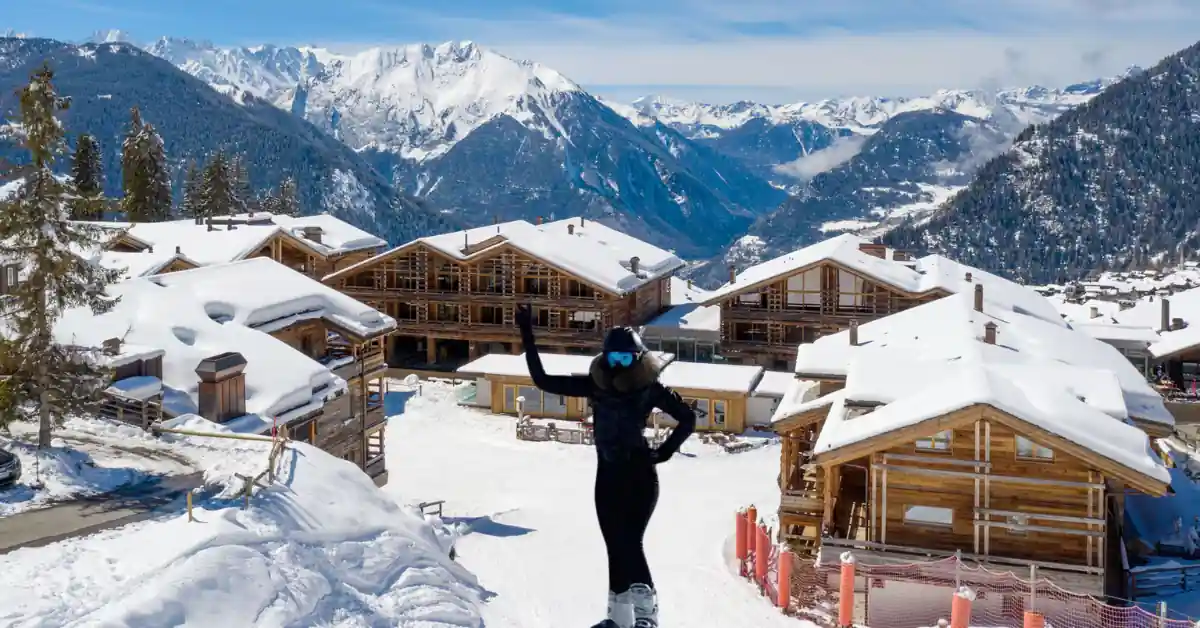
Standing atop Mont Fort at 3,330 meters, surveying Verbier’s legendary off-piste terrain stretching toward the Italian border, I understood why this Swiss resort attracts the world’s most dedicated powder chasers.
The combination of challenging ungroomed terrain, reliable snowfall, and Switzerland’s excellent avalanche-controlled terrain creates conditions that consistently deliver unforgettable backcountry experiences.
Verbier’s terrain suits confident skiers seeking adventure beyond groomed pistes. During multiple powder days here, I’ve followed local guides through trees, couloirs, and wide-open bowls that would challenge experts anywhere in the world.
The resort’s extensive lift network efficiently distributes skiers across the mountain, though the truly spectacular runs require hiking and route-finding skills that separate serious skiers from casual tourists.
The village atmosphere perfectly balances Swiss sophistication with international energy. I’ve spent countless evenings at the famous Pub Mont Fort, where the party starts at 4 PM and continues well past midnight.
The mix of seasonal workers, local Swiss residents, and international visitors creates a unique social scene that feels both cosmopolitan and authentically Alpine. The fondue restaurants throughout the village maintain traditional recipes while accommodating modern dietary preferences.
Best for: Advanced skiers and expert powder enthusiasts wanting challenging off-piste terrain and vibrant international atmosphere.
Insider tip: Join the first tram up Mont Fort on powder days—the descent through Tortin offers the best untracked snow, but you need to move fast before the crowds arrive.
7. Kitzbühel, Austria – Historic Town, Famous Hahnenkamm Downhill Race
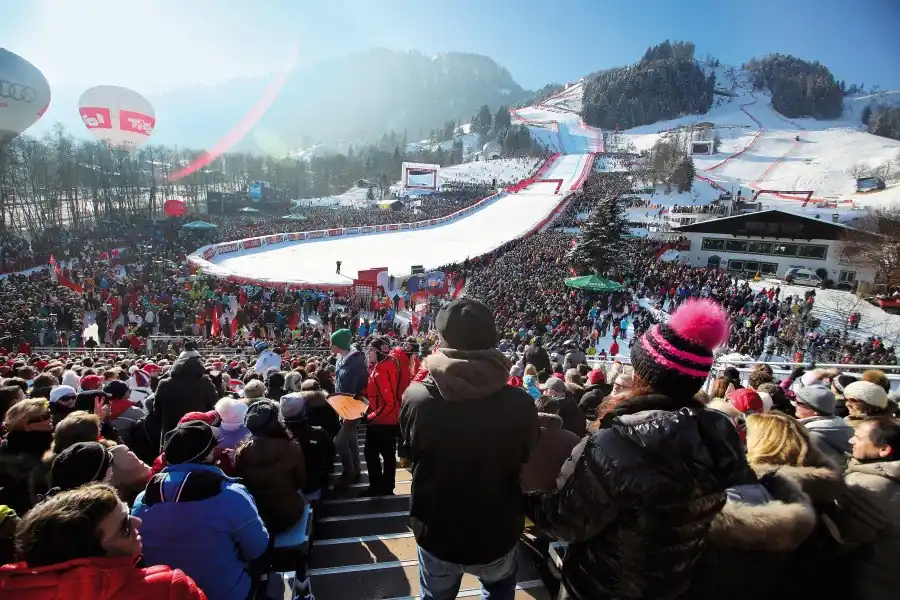
Few moments in skiing match the adrenaline of standing at the start of Kitzbühel’s legendary Hahnenkamm downhill, even as a recreational skier tackling a significantly mellowed version of the course that has claimed numerous World Cup careers. This historic Austrian town, which I’ve visited during both race weekend and regular skiing periods, represents Alpine skiing tradition at its most authentic.
The Hahnenkamm race weekend transforms Kitzbühel into skiing’s equivalent of the Kentucky Derby. I’ve witnessed over 100,000 spectators gathering on the mountain, creating an atmosphere unmatched anywhere in winter sports.
But beyond the racing spectacle, Kitzbühel offers surprisingly diverse terrain across its interconnected lift systems. The KitzSki area provides extensive intermediate runs, while the neighboring Ski Circus connects to additional valleys for exploration.
Kitzbühel’s medieval town center, with its colorful facades and traditional Austrian architecture, creates authentic Alpine ambiance that many purpose-built resorts lack. During multiple winter visits, I’ve explored centuries-old churches, traditional gasthofs serving local Tyrolean specialties, and family-run shops that have operated for generations.
The town’s commitment to preserving its cultural heritage while accommodating modern skiing infrastructure creates a unique destination that appeals far beyond just skiing enthusiasts.
Best for: Intermediate skiers wanting historic Alpine atmosphere, racing heritage, and traditional Austrian culture.
Insider tip: Visit during early January for the best combination of snow conditions, smaller crowds, and lower prices—you’ll experience authentic Kitzbühel without the Hahnenkamm circus.
8. Cortina d’Ampezzo, Italy – Dolomites Beauty, 2026 Winter Olympics Venue
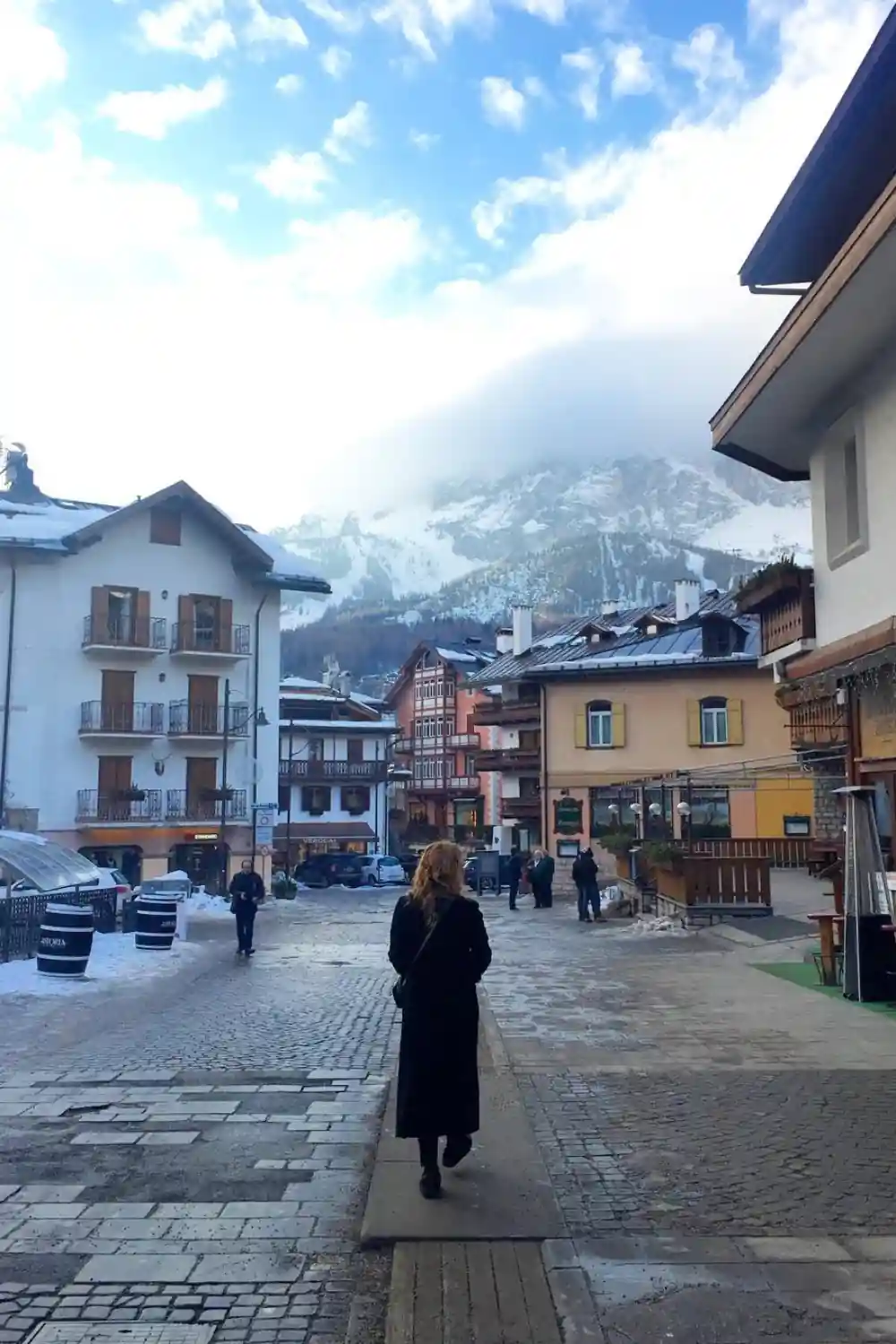
The first time I descended into Cortina d’Ampezzo’s valley, surrounded by the dramatic limestone spires of the Dolomites, I understood why this Italian resort inspired countless artists and filmmakers.
The unique geology creates skiing experiences unlike anywhere else in the Alps—vertical rock walls rising directly from groomed pistes, creating dramatic contrasts between pristine snow and ancient stone formations.
As the co-host city for the 2026 Winter Olympics, Cortina is undergoing significant infrastructure improvements while carefully preserving its distinctive character.
During recent visits, I’ve witnessed new lift installations and slope improvements that enhance the skiing experience without compromising the resort’s natural beauty. The Dolomiti Superski pass provides access to twelve interconnected resort areas, creating exploration opportunities that could occupy serious skiers for weeks.
Cortina’s Italian character distinguishes it from its Austrian and Swiss neighbors. Long mountain lunches featuring regional specialties like speck and local wines are cultural imperatives, not interruptions to skiing. I’ve spent hours on sunny restaurant terraces, savoring the relaxed Italian approach to mountain life while planning afternoon routes through the resort’s diverse terrain.
The evening passeggiata through Cortina’s elegant pedestrian zone continues Italian social traditions in an Alpine setting.
Best for: Intermediate skiers seeking dramatic scenery, Italian mountain culture, and Olympic-level infrastructure improvements.
Insider tip: Book the Lagazuoi cable car for sunset—the 360-degree Dolomites panorama is spectacular, and you can ski down by headlamp on designated evening runs.
9. Andermatt, Switzerland – Up-and-Coming, Freeride Terrain
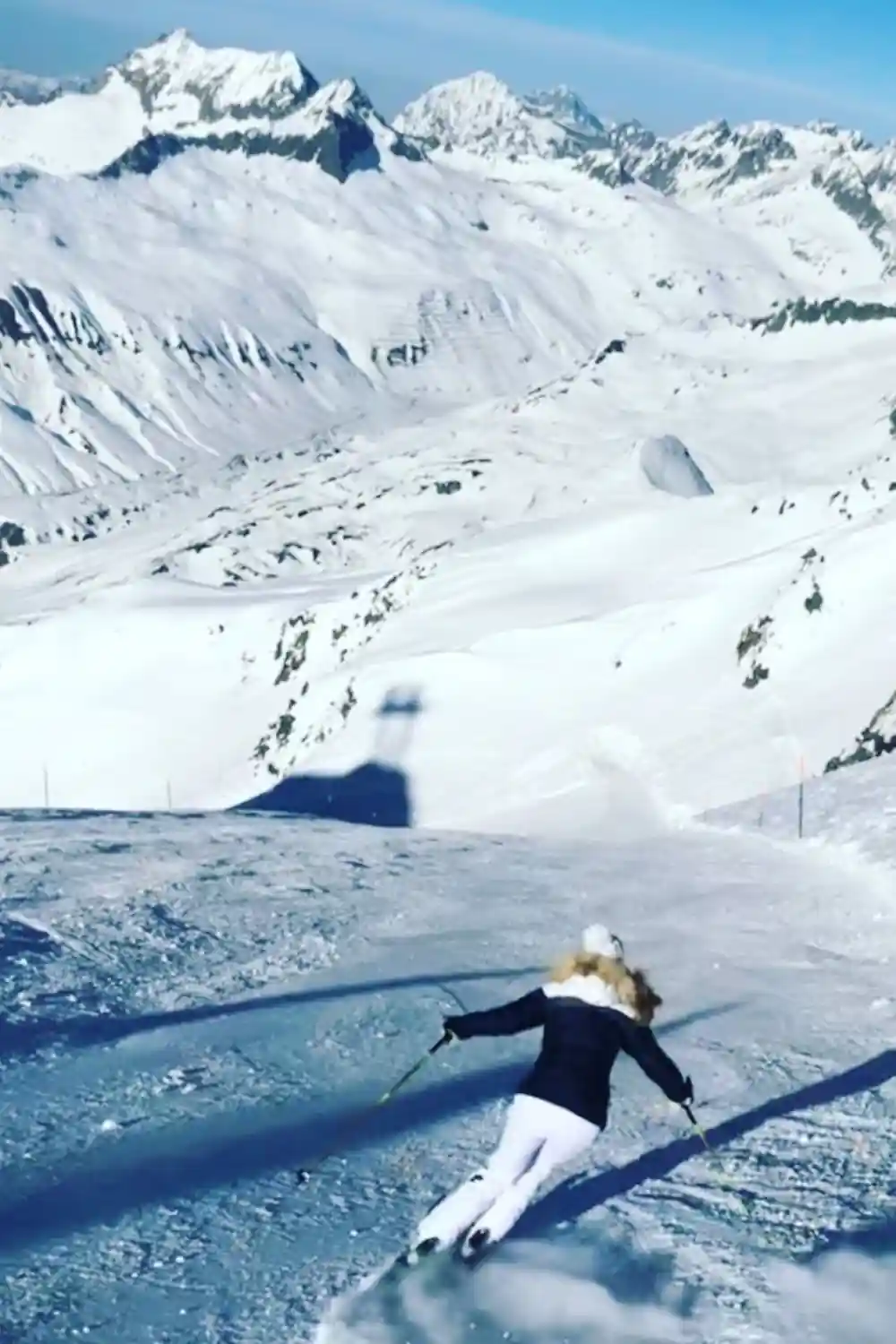
Andermatt represents Swiss skiing’s exciting future, and I’ve watched this historic military town transform into one of Europe’s most compelling ski destinations over the past five years.
The massive investment by Egyptian billionaire Samih Sawiris, including the ultra-luxury Chedi Andermatt, has created world-class infrastructure while preserving the resort’s authentic character and exceptional freeride terrain.
The skiing here caters particularly well to powder enthusiasts and backcountry adventurers. During multiple visits throughout various snow cycles, I’ve discovered terrain that rivals Verbier’s legendary off-piste opportunities but with significantly fewer crowds.
The resort’s high altitude and north-facing aspects preserve powder conditions longer than many Alpine destinations, making it particularly attractive for serious skiers seeking untracked snow days after storms.
What impresses me most about Andermatt is its commitment to sustainable development. The resort expansion has been carefully planned to minimize environmental impact while maximizing terrain diversity.
I’ve witnessed the gradual improvement of lift systems and slope preparation without the over-development that has affected some traditional Alpine resorts. The village maintains its military town character, with historic buildings housing modern restaurants and accommodations.
Best for: Advanced skiers seeking uncrowded powder terrain, luxury amenities, and authentic Swiss mountain culture.
Insider tip: The Nätschen area offers the best beginner and intermediate terrain, while experts should focus on the Oberalp-Sedrun connection for serious off-piste adventures.
10. La Plagne, France – Family-Friendly, Paradiski Domain
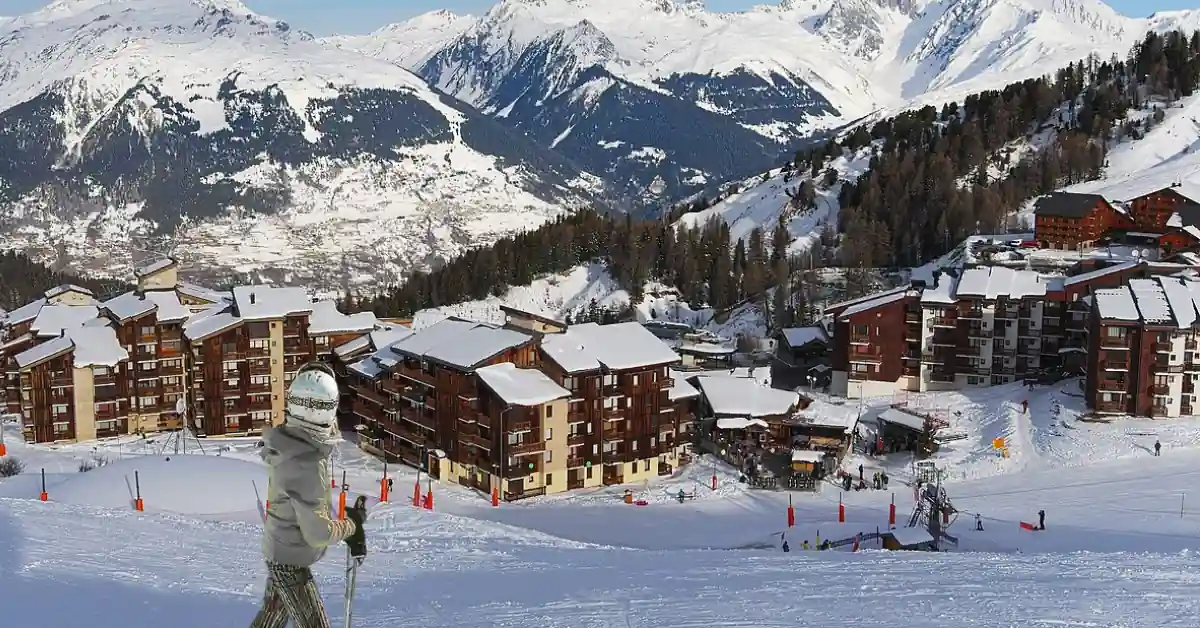
La Plagne holds special significance in my skiing journey—it’s where I first experienced the joy of cruising confidently down blue runs with my children, and where I witnessed the magic of introducing young skiers to mountain adventures.
This purpose-built French resort, connected to Les Arcs via the impressive Vanoise Express cable car, creates the massive Paradiski domain with over 425 kilometers of interconnected terrain.
The resort’s design prioritizes family convenience above architectural beauty. Most accommodations offer ski-in/ski-out access, and the lift systems efficiently transport families with young children and equipment.
During multiple family visits, I’ve appreciated amenities like heated lift stations, excellent ski schools with English-speaking instructors, and mountain restaurants designed to accommodate families with varying dietary needs and patience levels.
La Plagne’s terrain distribution makes it ideal for mixed-ability groups. I’ve guided families where parents could tackle challenging red runs while children gained confidence on gentle green terrain, all meeting for lunch at conveniently located mountain restaurants.
The resort’s snow parks and beginner areas receive excellent maintenance, ensuring positive experiences for developing skiers. The interconnection with Les Arcs provides exploration opportunities for stronger skiers without abandoning less experienced family members.
Best for: Families with children, beginner to intermediate skiers, and mixed-ability groups wanting convenient access to extensive terrain.
Insider tip: Stay in Plagne Centre or Plagne Villages for the best family amenities, and purchase the Paradiski pass to access Les Arcs—the variety will keep everyone engaged throughout the week.
11. Sölden, Austria – Reliable Snow, Glaciers, Nightlife
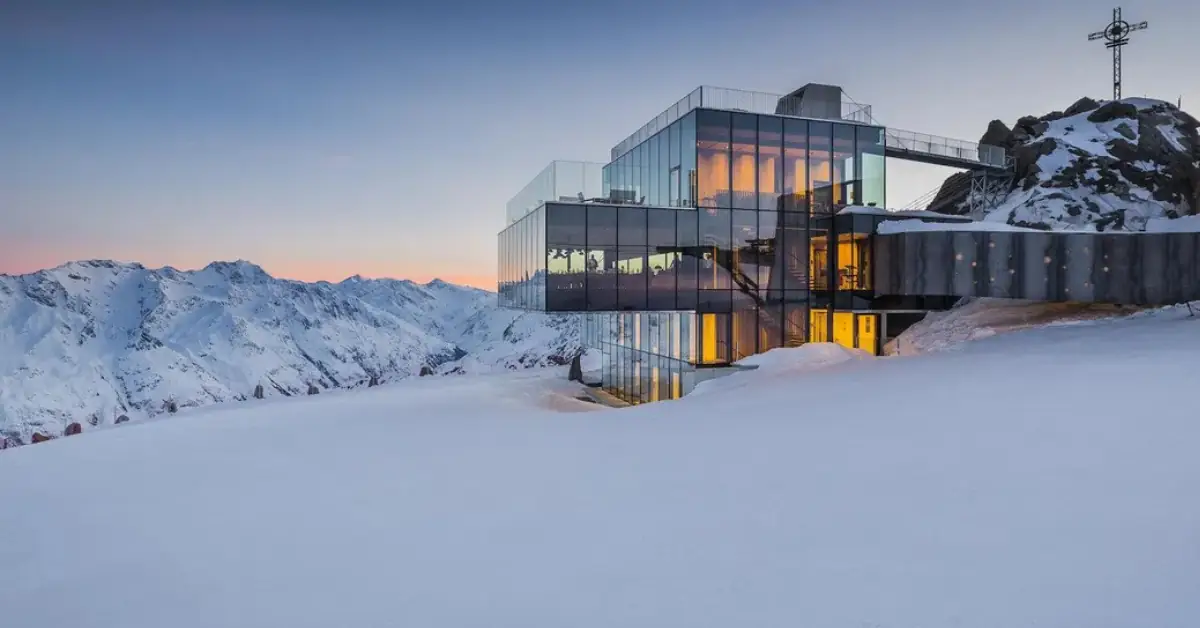
The Rettenbach Glacier above Sölden offers some of Europe’s most reliable skiing conditions, and I’ve experienced perfect powder here in both October and May—a season length unmatched by most Alpine resorts. This Austrian destination combines guaranteed snow with surprisingly vibrant nightlife, creating unique possibilities for serious skiing followed by serious partying.
Sölden gained international recognition as a James Bond filming location, and the 007 Elements Museum perched at 3,040 meters provides breathtaking views while celebrating the franchise’s Alpine adventures. But beyond Hollywood glamour, the resort offers substantial skiing terrain that extends well beyond the glacier areas.
During multiple visits throughout different seasons, I’ve explored varied terrain from gentle cruising runs to challenging off-piste routes that demand respect and experience.
The town’s nightlife scene rivals any European ski resort, with numerous bars and clubs that stay active well past midnight. I’ve experienced everything from traditional Austrian gemütlichkeit in family-run gasthofs to international DJs performing in modern clubs.
The contrast between serene glacier skiing by day and energetic nightlife creates unique vacation possibilities that appeal particularly to younger adult groups and social skiers.
Best for: Intermediate to advanced skiers wanting guaranteed snow conditions, extended seasons, and active nightlife.
Insider tip: The glacier skiing is best in the morning before afternoon clouds roll in—plan challenging runs early, then explore lower elevation terrain as visibility changes.
12. Bansko, Bulgaria – Budget-Friendly, Rising Popularity
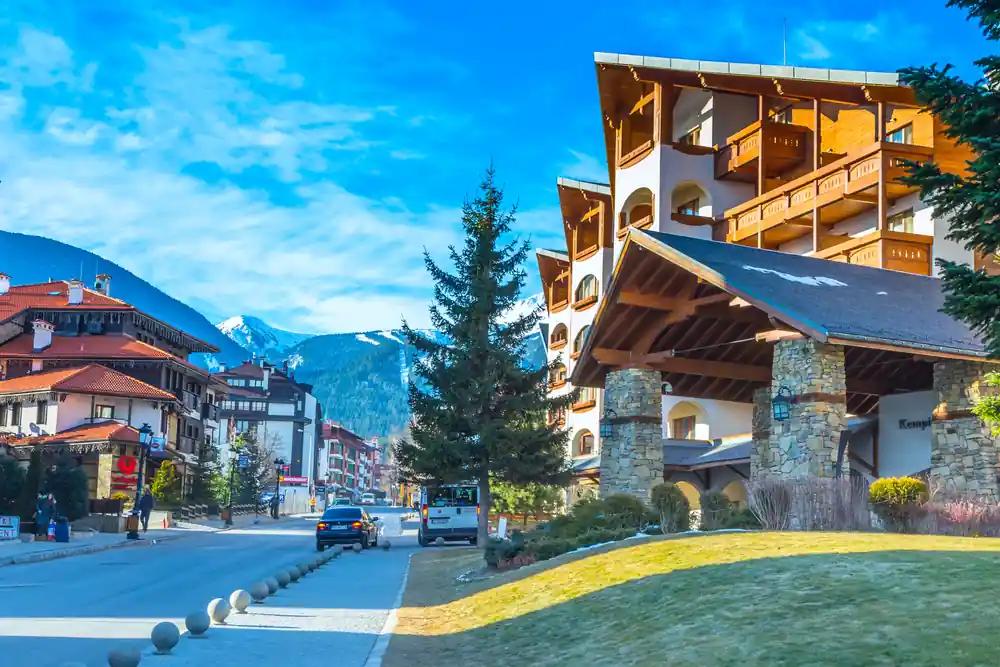
Bansko represents exceptional value in European skiing, and I’ve watched this Bulgarian resort steadily improve its infrastructure while maintaining prices significantly below Western European destinations.
The resort offers modern lift systems, extensive snowmaking, and surprisingly sophisticated dining options at costs that allow extended stays without breaking typical ski vacation budgets.
During my visits to Bansko, I’ve been impressed by the rapid improvements in lift technology and slope maintenance. The resort has invested heavily in modern gondolas and chairlifts that efficiently access varied terrain spanning from gentle beginner slopes to challenging expert runs.
The ski school maintains internationally recognized standards, with instructors trained in Western teaching methods but offering services at Eastern European prices.
The town of Bansko preserves authentic Bulgarian mountain culture while accommodating international visitors. I’ve enjoyed traditional Bulgarian cuisine in family-run restaurants, explored historic Orthodox churches, and experienced local folk music performances that provide cultural depth beyond just skiing.
The resort’s growing popularity among UK and Scandinavian visitors has created an international atmosphere while maintaining distinctly Bulgarian character and hospitality.
Best for: Budget-conscious skiers, beginners wanting affordable lessons, and travelers seeking authentic Eastern European mountain culture.
Insider tip: Visit during January or February for the best snow conditions and lowest accommodation prices—you’ll experience excellent skiing at remarkable value.
13. Sierra Nevada, Spain – Sun + Snow, Mediterranean Vibe
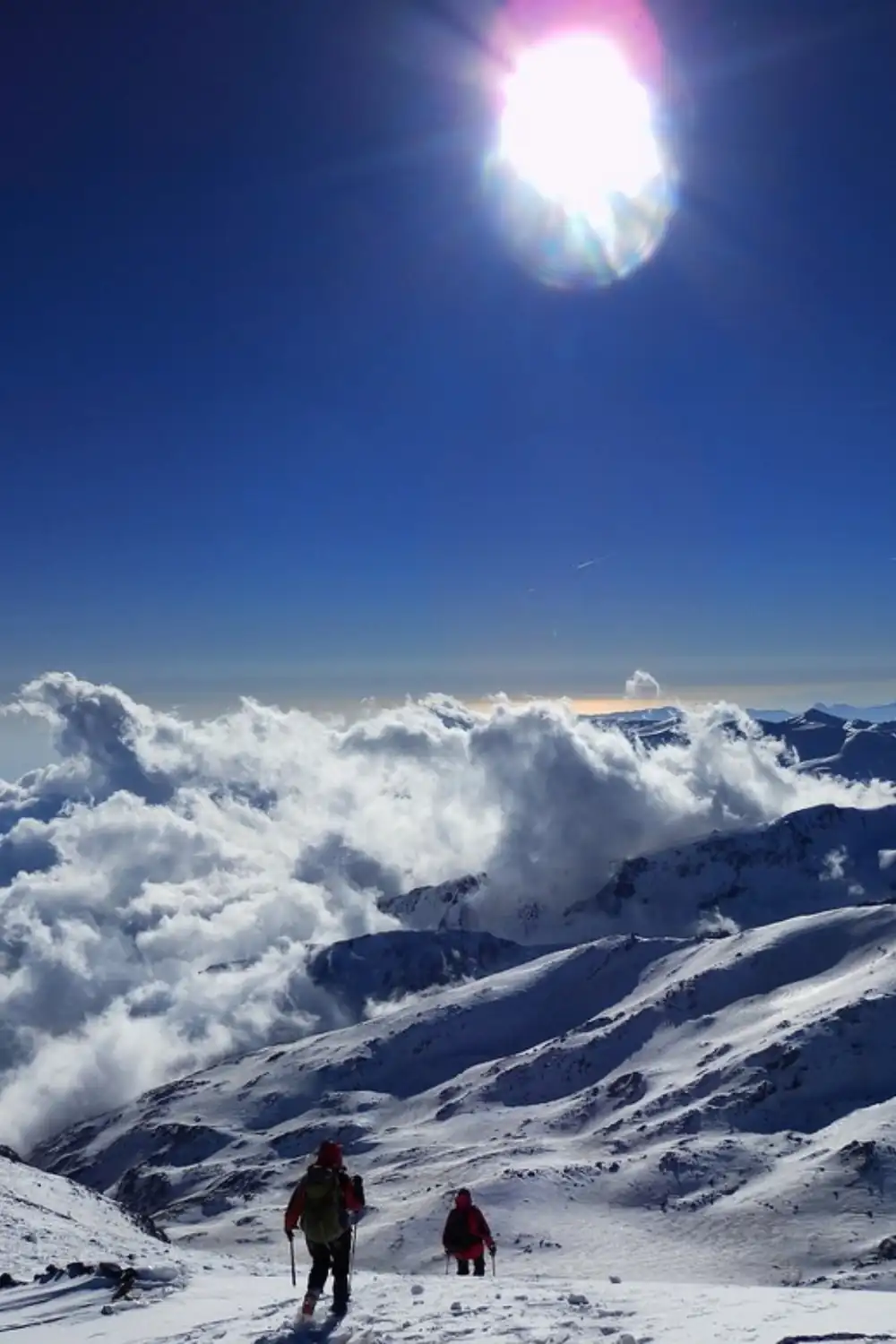
Sierra Nevada offers a uniquely Spanish take on Alpine skiing, and I’ve experienced the surreal pleasure of skiing in a t-shirt while gazing toward Africa’s Atlas Mountains on exceptionally clear days.
This Andalusian resort, perched above Granada at altitudes reaching 3,398 meters, combines reliable snow conditions with Mediterranean sunshine that creates skiing experiences impossible to replicate elsewhere in Europe.
The contrast between mountain and coast defines Sierra Nevada’s appeal. During extended stays here, I’ve skied perfect corduroy runs in the morning, then driven to Mediterranean beaches for afternoon tapas—a combination that epitomizes Spain’s geographical diversity.
The resort’s southern exposure and high altitude create unique snow conditions that local skiers have learned to maximize, though visitors often struggle initially with the intense UV exposure at altitude.
Granada’s proximity adds cultural richness that distinguishes Sierra Nevada from purely Alpine destinations. I’ve spent evenings exploring the Alhambra’s Moorish architecture, sampling traditional Andalusian cuisine, and experiencing flamenco performances that provide authentic Spanish culture alongside mountain adventures.
The resort’s Spanish character extends to relaxed scheduling—lunch breaks stretch longer, and après-ski continues well into the evening with tapas and local wines.
Best for: Intermediate skiers seeking unique cultural experiences, sun lovers wanting reliable snow, and travelers exploring southern Spain.
Insider tip: Visit during March for the best combination of snow quality and pleasant temperatures—you can ski in lighter clothing while enjoying extended daylight hours.
14. Åre, Sweden – Scandinavia’s Largest Resort, Night Skiing
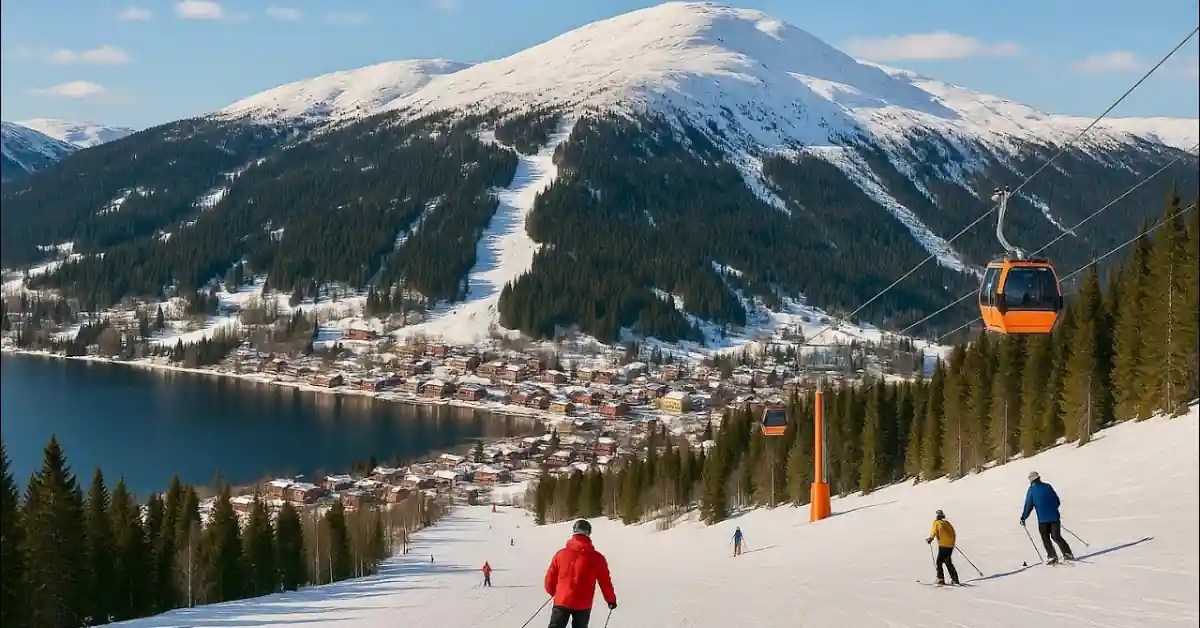
Åre represents Scandinavian skiing at its most sophisticated, and I’ve experienced the magic of skiing under the Northern Lights during extended January nights when darkness stretches for nearly eighteen hours.
This Swedish resort, which hosted the 2019 Alpine World Championships, offers terrain diversity and infrastructure quality that rivals any European destination while maintaining distinctively Nordic character and hospitality.
The resort’s night skiing opportunities are unmatched in Europe. During multiple winter visits, I’ve skied illuminated runs until 9 PM, experiencing the ethereal beauty of snow-covered forests under floodlights with temperatures that would challenge even seasoned cold-weather enthusiasts.
The lift systems operate efficiently even in extreme conditions, and the mountain restaurants serve traditional Swedish fare that provides necessary calories for cold-weather skiing.
Åre’s summer season transforms the resort into a mountain biking and hiking destination, but winter remains the primary draw. The village maintains authentic Swedish architecture and cultural traditions while accommodating international visitors with English-speaking services and varied accommodation options.
I’ve particularly enjoyed the traditional Swedish saunas after long skiing days, followed by local craft beer and reindeer specialties in cozy mountain lodges.
Best for: Intermediate to advanced skiers wanting unique Scandinavian culture, extensive night skiing, and winter activities beyond traditional Alpine experiences.
Insider tip: Book accommodation in Åre village rather than the modern developments—you’ll experience more authentic Swedish culture and have easier access to restaurants and traditional entertainment.
15. Grandvalira, Andorra – Affordable, Extensive Pyrenees Terrain
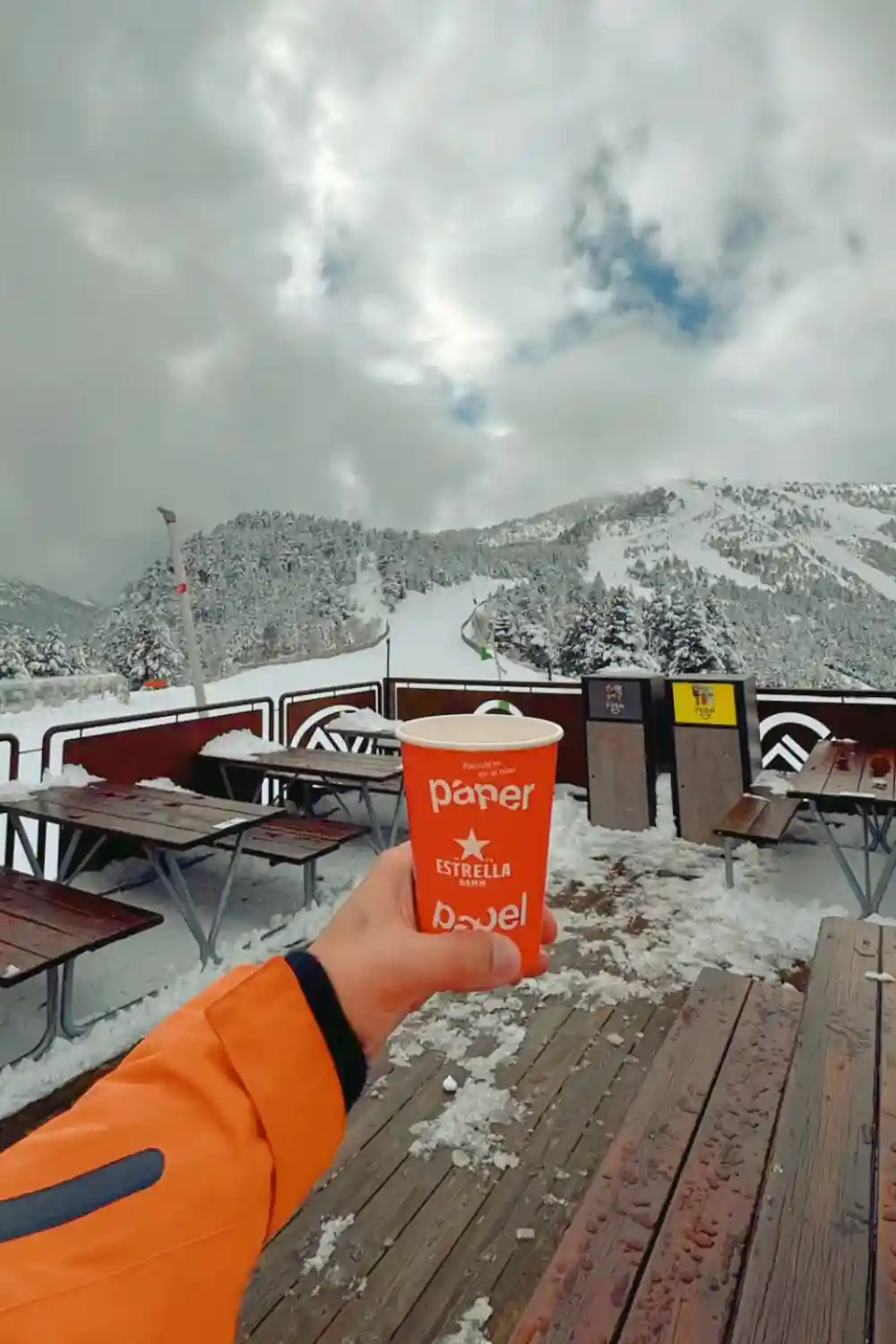
Grandvalira surprised me with its scale and sophistication during my first visit to this Pyrenean resort tucked between France and Spain. The interconnected domain offers over 210 kilometers of terrain that rivals many Alpine destinations while maintaining prices significantly below Swiss or French equivalents.
This duty-free principality creates unique opportunities for equipment purchases and dining experiences that blend French, Spanish, and Catalan influences.
The resort’s terrain suits all ability levels, from gentle beginner slopes in the Soldeu sector to challenging off-piste opportunities that have tested my skills during powder days.
I’ve been particularly impressed by the modern lift infrastructure and slope maintenance, which meets international standards while operating at costs that make extended stays financially feasible for average families and social groups.
Andorra’s unique political status creates interesting cultural experiences alongside the skiing. I’ve explored Andorra la Vella’s duty-free shopping, sampled Catalan cuisine in traditional mountain restaurants, and experienced the principality’s blend of Spanish and French influences in everything from architecture to local customs.
The resort’s proximity to Barcelona makes it accessible for weekend trips, though the mountain setting feels completely removed from urban Spain.
Best for: Budget-conscious families, intermediate skiers wanting extensive terrain, and travelers exploring the unique culture of the Pyrenees.
Insider tip: Stay in Soldeu for the most convenient lift access and authentic mountain atmosphere—the village offers better value than Andorra la Vella while maintaining easy access to all resort sectors.
How to Choose the Right Ski Resort in Europe
After skiing across Europe’s diverse mountain ranges for over two decades, I’ve learned that matching resort characteristics to traveler priorities determines vacation success far more than following popular recommendations or glossy brochures.
The best European ski resorts for families differ dramatically from destinations that excel for advanced skiers, and understanding these distinctions prevents disappointing mismatches.
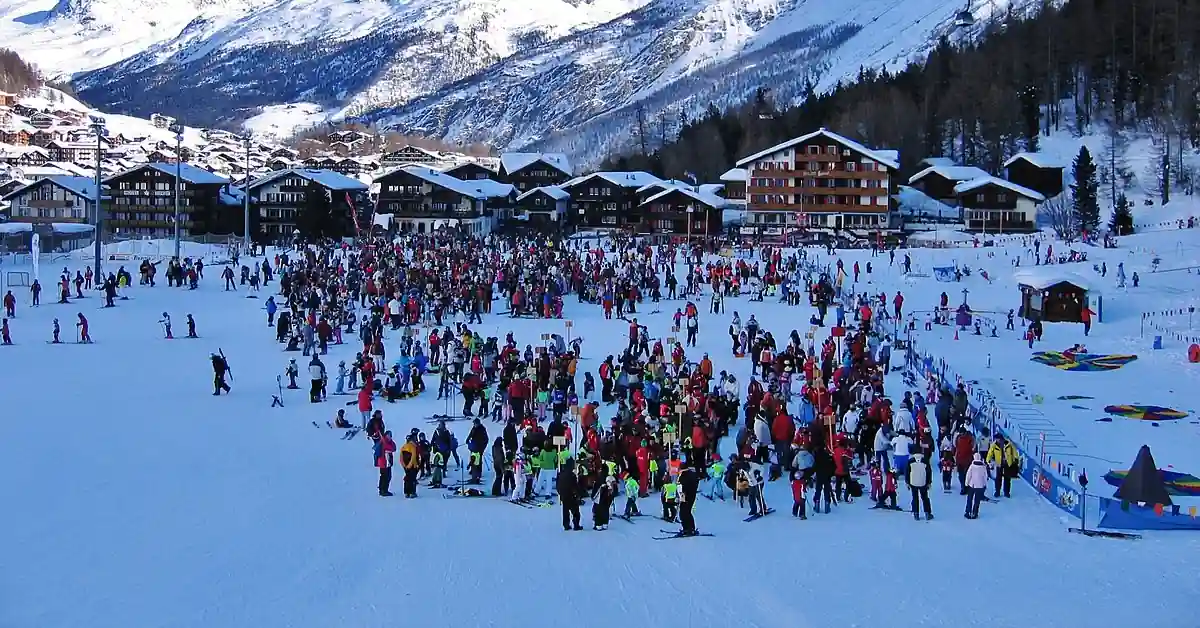
For Beginners and Families: The best family European ski resorts prioritize gentle terrain, excellent ski schools, and convenient logistics. La Plagne and Courchevel offer extensive blue runs with reliable snow conditions, while Sierra Nevada provides perfect learning weather with Spanish sunshine. These destinations feature:
- Wide, uncrowded beginner slopes
- English-speaking ski instructors
- Ski-in/ski-out accommodations
- Family-friendly mountain restaurants
- Convenient equipment rental services
For Intermediate Cruisers: Best European ski resorts for intermediates focus on extensive groomed terrain and efficient lift systems. Val d’Isère, Cortina d’Ampezzo, and Grandvalira offer hundreds of kilometers of perfectly maintained pistes where confident intermediates can explore varied terrain without encountering expert-only challenges.
For Advanced Skiers: The best European ski resorts for advanced skiers emphasize off-piste opportunities and challenging terrain. Chamonix, Verbier, and St. Anton provide legendary expert runs alongside extensive backcountry opportunities that demand serious mountain skills and appropriate safety equipment.
For Budget Travelers: Best value European ski resorts deliver authentic experiences without premium prices. Bansko, Grandvalira, and Eastern European destinations offer modern infrastructure and excellent skiing at costs significantly below traditional Alpine destinations.
Travel Tips for Skiing in Europe
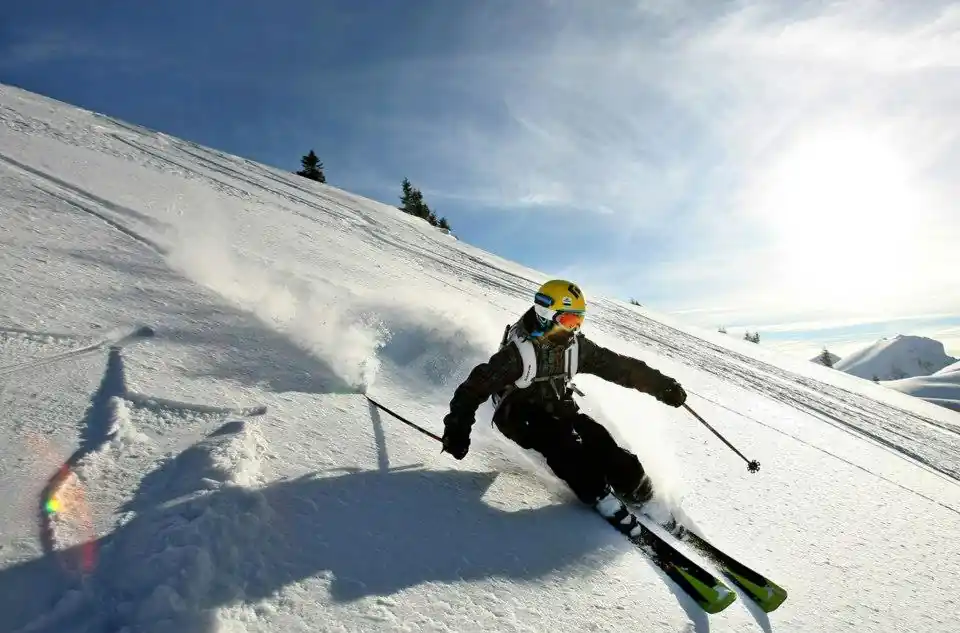
European ski travel requires different planning approaches than domestic skiing, and I’ve learned valuable lessons through countless cross-border adventures that have shaped my current travel strategies.
Understanding seasonal variations, transportation options, and cultural expectations dramatically improves vacation experiences while avoiding common tourist mistakes.
| Month | Snow Quality | Crowd Level | Best For | Price Level |
|---|---|---|---|---|
| December | Variable | High | Best European ski resorts for Christmas atmosphere | Premium |
| January | Excellent | Medium | Best European ski resorts in December/January powder | Good value |
| February | Peak conditions | High | School holidays | Premium |
| March | Reliable | Medium | Best European ski resorts for beginners’ weather | Moderate |
| April | Spring conditions | Low | Budget skiing | Best value |
Transportation Strategy: European train systems provide efficient resort access that often surpasses driving convenience. I’ve traveled from London to the French Alps in under eight hours using Eurostar connections, arriving relaxed and ready to ski rather than exhausted from mountain driving. The Swiss Travel Pass and similar national rail passes create cost-effective transportation that includes resort shuttle services.
Packing Essentials Beyond Equipment: European resorts expect higher fashion standards than many North American destinations. I’ve learned to pack:
- Quality après-ski clothing for restaurant dining
- European plug adapters for equipment charging
- Comprehensive travel insurance covering helicopter rescue
- Multiple forms of identification for border crossings
- Sunglasses rated for glacier conditions
Cultural Navigation: European après-ski culture emphasizes social dining over pure drinking. Long mountain lunches are cultural expectations, not interruptions to skiing. I’ve discovered that embracing local meal timing and social customs enhances experiences far beyond just accumulating vertical feet on the mountain.
Ski Pass Strategy: Multi-resort passes like the Mont Blanc Unlimited provide exceptional value for exploratory skiers. The Ski Plus City Pass in Austrian resorts includes cultural attractions and transportation, while French lift tickets often include access to neighboring countries through interconnected lift systems.
Final Thoughts
Last February in Chamonix, I watched dawn touch Mont Blanc while planning my day’s runs, reminded of how European skiing is more than just slopes—it’s living mountain culture. The best European ski resorts blend centuries of Alpine tradition with modern luxury, offering a mix of terrain, culture, and comfort that’s hard to find anywhere else.
From Austria’s glacier-carved valleys to Italy’s dramatic Dolomites, every range tells a different story. Cultural flavors shift too: Austrian warmth, French elegance, Italian ease, and Swiss precision—each shaping not only the skiing but the après-ski spirit.
What amazes me is how seamlessly Europe preserves authenticity while embracing innovation, from high-speed lifts to world-class spas. Add in trains that whisk you from city to summit, and you’ve got more than a ski trip—you’ve got a cultural journey. Choose your path, chase your snow, and let Europe’s slopes craft memories that stay forever.
Frequently Asked Questions
1. Which country has the best ski resorts in Europe?
France, Austria, Switzerland, and Italy all compete, but France often tops lists for scale and variety.
2. Is skiing in Europe expensive?
It can be, especially in Switzerland and France, but Austria, Italy, and Eastern Europe offer great value.
3. Do I need travel insurance for ski trips?
Yes—insurance covering winter sports is essential for accidents, medical costs, and lost gear.
4. Can beginners enjoy major resorts?
Absolutely, most major resorts have beginner zones, ski schools, and easy green runs.
5. Are there snow-sure resorts for early/late season?
Yes—glacier resorts like Tignes, Zermatt, and Hintertux guarantee reliable snow.
6. What is the nicest ski resort in Europe?
Courchevel in France is famous for luxury, while St. Anton in Austria blends charm with nightlife.
7. What are the top 5 ski resorts?
Val d’Isère, St. Anton, Zermatt, Courchevel, and Verbier often rank as Europe’s best.
8. What are the big 3 ski resorts?
Courchevel, Méribel, and Val Thorens—the legendary Three Valleys in France.
9. Where in Europe is it cheapest to ski?
Bansko (Bulgaria), Jasná (Slovakia), and some Italian resorts are budget-friendly picks.
10. Where do billionaires ski in Europe?
St. Moritz in Switzerland is the classic playground for the wealthy.
11. What is the #1 ski resort in the world?
Many rank Whistler Blackcomb in Canada at the top, though Europe rivals it.

